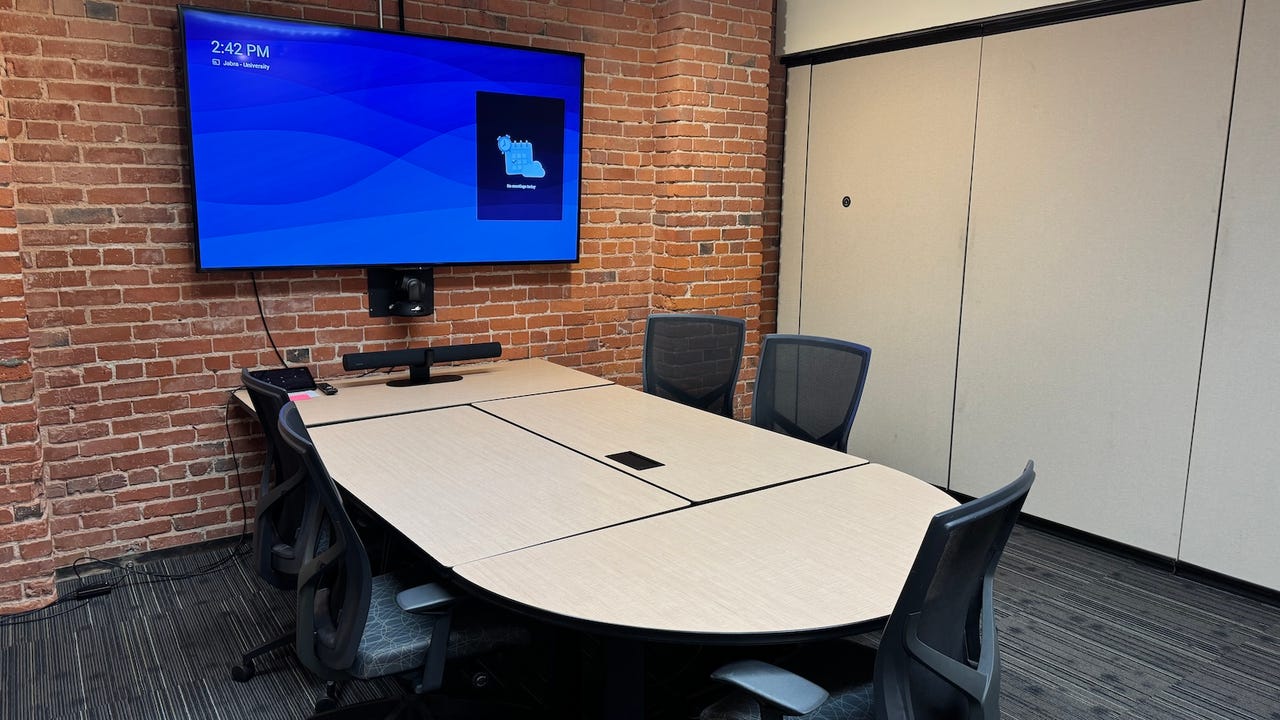'ZDNET Recommends': What exactly does it mean?
ZDNET's recommendations are based on many hours of testing, research, and comparison shopping. We gather data from the best available sources, including vendor and retailer listings as well as other relevant and independent reviews sites. And we pore over customer reviews to find out what matters to real people who already own and use the products and services we’re assessing.
When you click through from our site to a retailer and buy a product or service, we may earn affiliate commissions. This helps support our work, but does not affect what we cover or how, and it does not affect the price you pay. Neither ZDNET nor the author are compensated for these independent reviews. Indeed, we follow strict guidelines that ensure our editorial content is never influenced by advertisers.
ZDNET's editorial team writes on behalf of you, our reader. Our goal is to deliver the most accurate information and the most knowledgeable advice possible in order to help you make smarter buying decisions on tech gear and a wide array of products and services. Our editors thoroughly review and fact-check every article to ensure that our content meets the highest standards. If we have made an error or published misleading information, we will correct or clarify the article. If you see inaccuracies in our content, please report the mistake via this form.
How I optimized an old office space for greater productivity and collaboration

ZDNET's key takeaways
- The Jabra PanaCast 50 video bar system is available now for $1,447.
- The PanaCast 50 is reliable, easy-to-use, and provides a solid 180-degree view for small to medium rooms.
- However, the audio could be a bit louder and it would be nice to integrate Jabra Speak mics and speakers.
My engineering consulting company works out of an older building with unique architecture. It's lovely, but it's not optimized for virtual meetings. Our three conference rooms were designed for in-person meetings about 15 years ago when large teams were in the office all the time. COVID changed all of that with the incorporation of hybrid meetings as the new norm. And, with participants joining meetings from all around the world, technical issues are commonplace.
Also: The best sound systems you can buy: Expert tested
As the director of operations, one of the items under my scope was improving the functionality of these conference rooms. With an archaic, proprietary system in place, I decided to test out a completely new system with Jabra's new PanaCast 50 videobar system, and realized almost immediately that this would be the path forward.
View at JabraOur company has come to trust Jabra as a reliable brand for office-ready devices such as the Jabra Speak and PanaCast web conferencing cameras, so we figured Jabra's newest offering, the PanaCast 50 would be a solid option to modernize our conference room.
The Jabra PanaCast 50 video bar system includes three 13-megapixel cameras embedded into the center of the video bar that provide a 180-degree view of the conference room. Additionally, eight beamforming microphones are embedded into the video bar to provide good volume and clear communication. This hardware solution is designed for meeting rooms up to 15 feet by 20 feet, which just about matched the test conference room I started with.
Since this was a test and not a permanent installation, I used the table stand accessory to mount the PanaCast 50 on a table. At first, I kept the oval conference room table where it was in the center of the room, but that resulted in marginal microphone performance at the far end so we shifted the room a bit and moved the meeting table adjacent to the table stand. The result? No one has complained about audio quality for the past few months. That being said, I would still love to see support for extending the audio back even further from the PanaCast 50 with Jabra Speak extendability.
My IT team was able to connect the PanaCast 50 to our system using an ethernet cable and then to the display unit via USB-C. You can then connect any large screen to the display unit via an HDMI cord. If you want to connect to your laptop to share your screen, you can replace the display unit USB-C connection with your laptop's connection cord.
The Jabra system is compatible with all leading video and audio conferencing solutions while it is certified for Microsoft Teams Rooms, Zoom, and Zoom Rooms. Given we are a Microsoft 365 company, we integrated it into our Microsoft Teams system and its easy of use has proven to be a relief to the rest of the staff.
Also: Microsoft brings a new look to Teams Rooms on Windows
It's wonderful to simply invite a room to the meeting by setting it up in Outlook, and then pop in with a simple tap of the display unit. No one has to scramble for missing cables, find a power source, or install updates to host; the entire audio/visual connection has been, in my experience, seamless.
Jabra's PanaCast 50 also uses an Intelligent Zoom feature to dynamically frame all of the people in the room, while the Virtual Director mode tracks the speaker. All of the features, updates, and settings are managed by IT in the Jabra Direct software, and the degree of customization allows for plenty of options and permissions. There's even a whiteboard feature that can be used with the system.
ZDNET's buying advice
Once I was tasked with modernizing our conference room systems, I knew there had to be a better solution than the expensive, custom-built system we had in place. The Jabra PanaCast 50 and Microsoft Teams Rooms system exceeded my expectations in terms of ease-of-use and reliability, while I think there is some room for an improved audio performance. We were so impressed, that my team is now exploring implementing the same solution to the other two conference rooms in the office.
